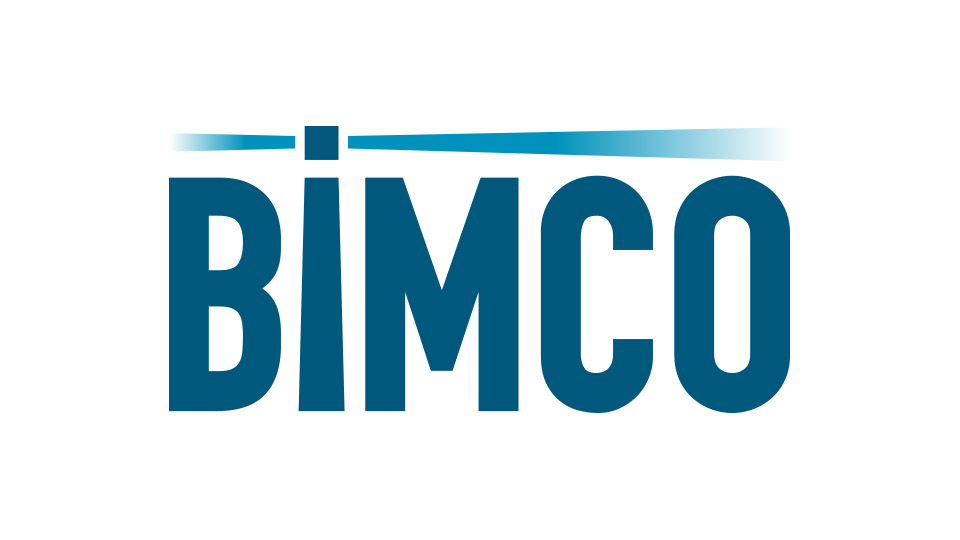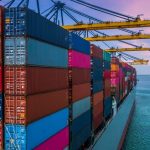Following two slow COVID years, Russia’s invasion of Ukraine, and the market upheaval that has followed, freight rates have risen up to rarely-seen levels. In the three months since 24 February 2022, the Baltic Exchange Clean Tanker Index (BCTI) has more than doubled, while the Baltic Exchange Dirty Tanker Index (BDTI) has increased by 25%.
A combination of self-sanctioning and actual sanctions on Russian energy exports has led to an increase in average tonne miles. An increasing amount of Russian crude is going to India and China, while Europe has been importing products from further afield.
Disappointingly, compared to 2021, China’s total imports have meantime not added much tonne miles demand to the dirty tanker trade. The recently-extended COVID lockdown in Shanghai is no doubt to blame as both mobility and production have been shut down.
In the clean tanker segment, tonne miles demand into Japan and South Korea has been lower than in 2021 from mid-January to mid-May, and despite recent signs of growth year-to-date demand remains 6.3% lower than in 2021. Tonne miles demand into Southeast Asia also experienced a slow period from mid-February to mid-May, but year-to-date is on par with 2021.
Time charter rates for product tankers have followed freight rates upwards and LR2s have been particularly popular. Generally, crude tankers have not increased as much, but Aframaxes have seen good gains.
On the asset front, second-hand prices have also followed freight rates upwards, while newbuilding prices have seen increases as yards have secured larger orderbooks based on Container and LNG contracting. Second-hand transactions have increased slightly, whereas newbuilding contracting has remained low.
Demand Drivers
In April, the International Monetary Fund (IMF) lowered their forecast for global GDP growth to 3.6% for 2022 and 3.6% for 2023. These figures are down 0.8 pp and 0.2 pp respectively on those forecast in January, prior to Russia’s invasion of Ukraine. The forecast for all main importers of bulk commodities has been reduced.
The forecast for GDP growth in China has been lowered to 4.4% and 5.1% for 2022 and 2023 respectively. The forecast for 2022 is somewhat lower than China’s official target of 5.5%, but some analysts predict that growth will be even lower; Bloomberg Economics predicts it could be as low as 2.0%. In our opinion, no matter where growth will end up, 2022 will be a tale of two halves. The first half has been hurt by lockdowns, whereas we believe that President Xi Jinping will look to ensure recovery in the second half leading into his re-election in the autumn at the 20th Congress of the Chinese Communist Party.
Despite cutting the GDP growth forecast by 0.8 pp in 2022 and 0.2 pp in 2023, India is still forecast to be the fastest-growing major economy during the two years, with figures of 8.2% and 6.9% in 2022 and 2023 respectively.
The outlook for all other major economies has also been reduced. Most noteworthy is a 1.0 pp reduction in the growth forecast for the European Union in 2022, which is now down to 2.9%.
IMF’s global forecast mentions large downside risks related to further adverse developments in commodity prices, supply chain disruptions, inflation, and financial conditions. In their worst-case scenario, the IMF predicts that GDP in 2023 could end 2.0% lower than the baseline forecast. A recent report from the OECD highlights the risk. In Q1 2022, the combined GDP of the G7 countries is estimated to have shrunk by 0.1% q/q, whereas the IMF’s baseline forecast assumes that the combined GDP of the G7 economies will grow by 3.2% in 2022.
Aside from increased economic activity, the EU agreement to ban all seaborne imports of Russian oil and oil products by the end of 2022 is likely to increase average tonne miles in both the dirty and clean trades. The EU will have to look further afield for supply, while Russian exports will have to find new destinations, which are likely to be in Asia. The EU’s insurance ban on ships exporting Russian oil may make this difficult, however.
The recent surge in crude prices to above USD 100/barrel meantime represents a risk as it may lead to demand destruction. The US Energy Information Agency (EIA) predicts that Brent will remain above USD 100/barrel until early 2023 but will not decrease by much as the forecast assumes that it will average USD 97/barrel during 2023.
The EIA is forecasting an increase in global crude and liquids production in both 2022 and 2023. Production in 2022 is expected to remain below the pre-COVID levels of 2019 and production is not expected to exceed 2019 levels until 2023. The forecast 1.3 mbpd (1.3%) increase is expected to be made up of a significant 2.4 mbpd drop in Russian production matched by an equal increase in production in North America. Smaller individual increases by OPEC countries, Latin America, and non-OPEC countries will contribute 1.3 mbdp. Production in 2023 is forecast to be up 6.3% on 2021.
Consumption in China never dipped below pre-COVID levels and is expected to end 2.0 mbpd (14.6%) higher in 2023 than in 2019. Undoubtedly, any new COVID lockdowns like the recent one in Shanghai would hit consumption in 2022. In the US, India, and the Middle East consumption in 2023 is also expected to end slightly higher than in 2019. In other OECD and non-OECD areas, consumption is expected to remain lower than 2019 during both 2022 and 2023, despite increases on 2021. All in all, consumption in 2023 is expected to end up 0.7 mbpd (0.7%) higher than in 2019 and 4.3% higher than in 2021.
According to the International Energy Agency (IEA), refinery capacity is expected to continue to grow in Asia, with China and the Middle East leading the way. Africa is the only other region expected to see higher refinery capacity, specifically in Nigeria, and this adds new export potential. Overall, capacity is expected to grow by 2.7 mbdp compared to 2019. As it is significantly higher than the expectation for product demand the IEA estimated that at least 6 mbpd capacity must be closed to bring average utilisation back up above 80%.
As mentioned, quite a few uncertainties surrounding the global economic forecast remain and consumers are having to contend with increasing energy and food prices as well as higher interest rates. This is all is eating into discretionary income and could hurt demand. Many low-income countries that export neither energy nor food are already struggling with a burgeoning food crisis, and discretionary spending is very small. In developed countries, some consumers also must prioritise spending and it seems logical that travel expenses may be reduced.
Even if the recovery in demand slows, the trade miles gains caused by the redrawing of the trade routes will still secure growth in demand for both crude and product tankers, and the EU ban on Russian oil will be a key driver of this growth. We therefore remain positive for both sectors, although cargo demand may not meet current forecasts.
Supply
Year-to-date contracting from January to April was slightly higher than last year, but the orderbooks are still very small. The crude orderbook is only 6.2% of the trading fleet and the product orderbook is 4.9%. Considering the favourable freight rate development, we expect that contracting will pick-up during the rest of the year. However, those ships will be delivered in 2024, at the earliest, and will have no impact on the supply/demand balance in 2022 and 2023.
Demolition is also expected to respond to the higher freight rates and be significantly lower than last year. We forecast 3.6 and 2.4 million DWT for crude and product tankers respectively.
While the product tanker fleet is expected to show only minimal growth in both 2022 and 2023, there are many crude tanker deliveries planned for 2022 and fleet growth will hit 4.1% but will drop to 2.1% in 2023.
We must meantime highlight that this estimate does not assume increased demolition because of EEXI and CII introduction on 1 January 2023, nor does it consider likely ETS implementation to be likely in the EU.
We are quite certain that these regulatory measures will impact average sailing speed and thereby effective capacity supply. On some ships, Engine Power Limitation (EPL) will be used to comply with EEXI, while others may not be able to comply and will be demolished. Owners and operators may also wish to cut operational speed to improve CII ratings and limit ETS cost exposure.
If we assume an average sailing speed reduction of 0.5 kn, it will reduce effective capacity supply by 4.3% for both crude and product tankers. For product tankers, this would cause effective capacity supply in 2023 to be lower than in 2021, despite the fleet growth. For crude tankers, it would also negate much of the fleet growth, but effective capacity supply would still increase.
Conclusion
The overall recovery in demand, along with increasing average tonne miles and very muted fleet growth points towards a continued tightening of the supply/demand balance in the product tanker market; decarbonisation regulation is very likely to tighten the balance even further in 2023. Overall, it appears that owners and operators can look forward to very strong market conditions.
With quite a few deliveries in 2022, the crude tanker market may not experience as strong a market, even if the demand side is impacted by the same positive factors. Taking the changes to trading patterns and the planned deliveries into account, we may see a market where the smaller sizes benefit more from market developments, whereas VLCCs could lag somewhat.
All in all, tanker owners and operators appear to finally be able to look forward to a solid and sustained recovery, although plenty of risks remain. Many are increasingly concerned about the inflationary impact on consumers and businesses across the world, as well as the developing food crisis. This could certainly have a negative impact on prospects, although the benefits of higher average tonne miles can be reaped no matter what.
Source: Hellenic Shipping News






